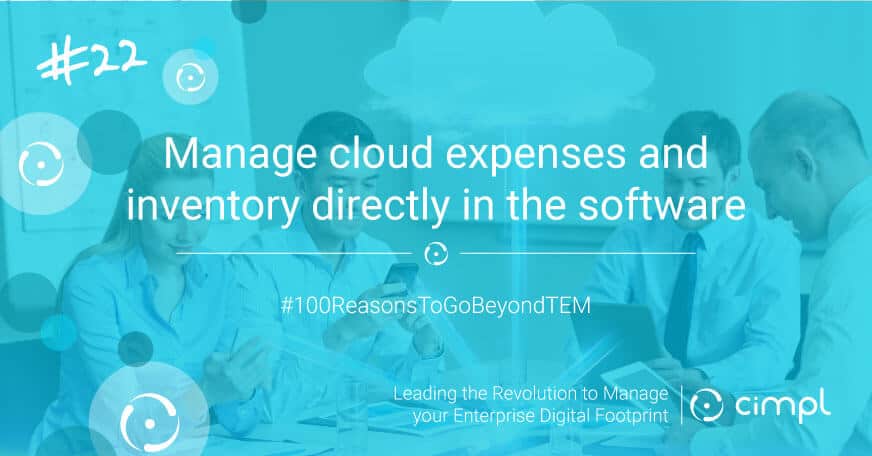All About the Cloud and How TEM Can Help
All About the Cloud and How TEM Can Help
According to Microsoft, cloud computing can be defined as “the delivery of computing services—servers, storage, databases, networking, software, analytics, and more—over the Internet (“the cloud”)”. Cloud providers offer businesses a new way to think about and work with their IT resources. Often operating on public networks, cloud software allows users to access data and information via the internet, without the need to download applications and programs. Cloud computing therefore benefits enterprises as they can easily scale up or down the computing power and storage to optimise their business.
Managing cloud expenses and inventory directly in the software is the 22nd reason to go beyond TEM and manage the enterprise digital footprint.
According to Microsoft, cloud computing can be defined as “the delivery of computing services—servers, storage, databases, networking, software, analytics, and more—over the Internet (“the cloud”)”. Cloud providers offer businesses a new way to think about and work with their IT resources. Often operating on public networks, cloud software allows users to access data and information via the internet, without the need to download applications and programs. Cloud computing therefore benefits enterprises as they can easily scale up or down the computing power and storage to optimise their business.

There are three main types of cloud services;
- Infrastructure-as-a-Service (IaaS): This kind of service involves renting IT infrastructure, such as servers, storage, networks, and more, from a cloud provider. Some examples are Rackspace and Amazon Web Services (AWS).
- Platform-as-a-Service (PaaS): A PaaS provides end-users with a development platform that allows for the development, building, testing, and hosting of applications. Some examples of this include Microsoft Azure, ServiceNow and IBM.
- Software-as-a-Service (SaaS): This service entails delivering software applications via the Internet, on demand. Hosted on the cloud and offered as services to end-users, SaaS usually works on a subscription basis. Some examples would be Salesforce, Google Apps, and Cimpl.
While the idea of hosting data on public networks tends to bring about security concerns, cloud computing comes with several benefits.
One of the central purposes of telecom expense management is to offer businesses a way to gain key insight into costs and usage associated with IT assets and services. Changes in technology as we move towards new kinds of services are leading to many changes in the TEM landscape. Telecom expense management has gone beyond managing telecom, and has evolved into a greater management of the entire technology environment. From IT, M2M, and mobile assets, to things like UCC and IoT assets, which should all be tracked as part of your inventory.
How Can TEM Be Leveraged?
The very promise of cloud computing is the ability to optimize and scale to meet the needs of the customers. For that reason, cloud investments should be optimized regularly just like everything else that you manage. Software licenses and other purchases around cloud typically don’t involve any tangible assets such as hardware. Cloud servers can make it more challenging to allocate costs to specific departments and users, depending on who’s using which servers. Cost allocation will play a key role in maintaining control over cloud-related assets, services, and their associated costs, while managing an accurate inventory.
On the same token, much like devices that are hidden away in the office and not being used, organisations may find themselves with servers that aren’t being used either, which can open up new saving opportunities. Much like seeking out zero-usage assets and services, cloud servers and investments can be analyzed and optimized in the same way. Tracking cloud servers will be a key component to ensuring that you aren’t spending needlessly. All of these things can be done by leveraging telecom expense management software to bring your inventory accuracy to the next level.
To learn more about how technology expense management can have its capabilities leveraged to manage cloud expenses, don’t hesitate to contact us today.

More resources
More resources

The European Accessibility Act (EAA) Is Here: How to Stay Compliant
The European Accessibility Act (EAA) Is Here: How to Stay Compliant

From Hours to Minutes: How AI in Knowledge Management Can be More Human
From Hours to Minutes: How AI in Knowledge Management Can be More Human
